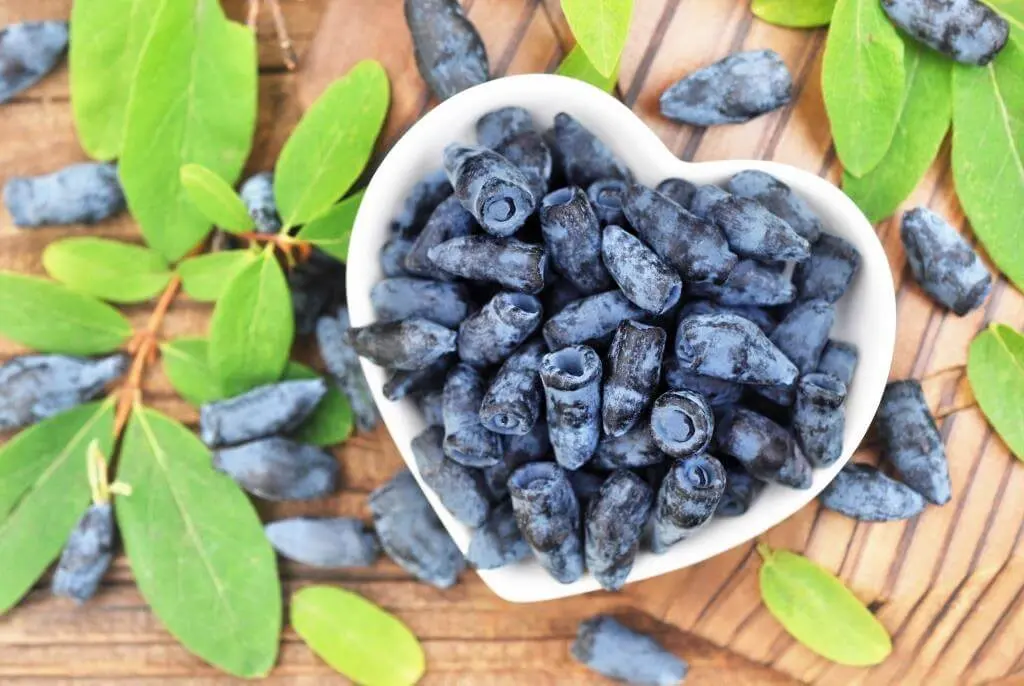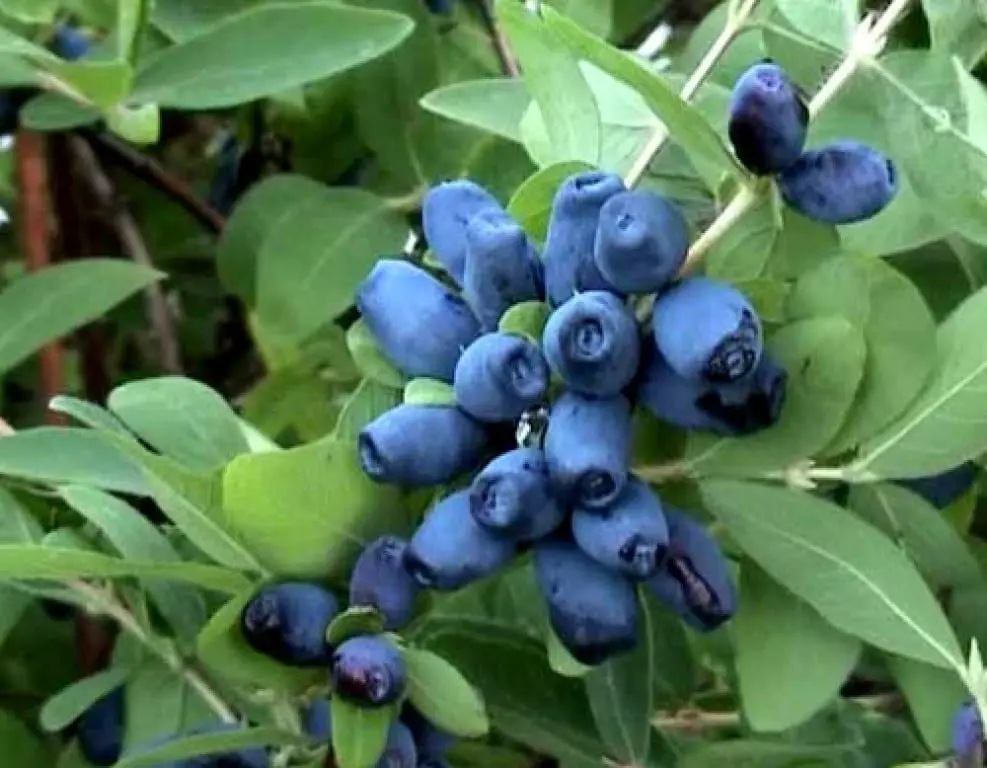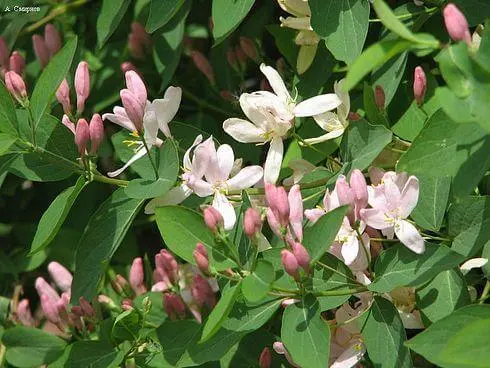Contents
Description
Honeysuckle (Lonicera) is a type genus of the honeysuckle family. It unites about 200 different species, which are represented by creeping, climbing and erect shrubs. This plant got its Latin name in honor of the German scientist Adam Lonitzer, while K. Linnaeus called it “honeysuckle”, in those years, honeysuckle (fragrant) was often cultivated in gardens in Europe.
Under natural conditions, honeysuckle can be found in the Northern Hemisphere, but most of the species are found in the Himalayas and East Asia. Today, garden honeysuckle is most often grown in gardens, which can play the role of an ornamental plant and produce very tasty and healthy berries at the same time, and curly honeysuckle, as a rule, was used for vertical gardening.
Small dark blue fruits with a white bloom are familiar to all lovers of summer berries. Honeysuckle is the Latin name for Lonícera and is a genus of upright, climbing shrubs like a vine or creeping shrubs of the Honeysuckle family.
Honeysuckle Types and varieties
According to various estimates, there are from 200 to 250 varieties of honeysuckle, however, only a few of them are edible. When choosing a variety of berries, you need to pay attention to the various characteristics indicated in the description.
An important point is the degree of yield. In high-yielding varieties, it reaches 5 kg of berries from a low bush and 8 kg from a large one.

The size of the berries is also of great importance. The largest berries, weighing up to 2 g, are possessed by the Provintsialka, Commonwealth, moraine, amphora, Long-fruited, Fire Opal, Kunashirskaya varieties.
Care should be taken to ensure that the variety is non-sprinkling, otherwise a large number of berries will end up on the ground. The most successful varieties according to this indicator are Viola, Morena, Altair, Provintsialka and some others.
Berry flavor is the most important criterion for choosing a variety. Most wild species of honeysuckle have a bitter taste that lingers in the mouth for a long time. The bitterness taste was preserved in most varieties bred in Altai, but it disappears after heat treatment of the berries. The varieties Altair, Nightingale, Violet, Magician, Leningrad giant, Volkhova have a dessert taste.
There are varieties and ripening periods. Medium early varieties include Altair, Violet, Viola, Long-fruited. The Kunashirskaya variety is distinguished by very late ripening periods.
It is recommended to have several varieties of honeysuckle bushes on the garden plot, otherwise the process of pollination will not occur.
Honeysuckle Beneficial features

Honeysuckle is a valuable berry that contains many nutrients that the body needs in early spring and throughout the year.
- Vitamins A, C, groups B, P
- Organic acids
- Fructose
- Glucose
- Trace elements: magnesium, potassium, sodium, copper, iodine, silicon, manganese, zinc, aluminum, barium
- Pectin
- Tannins
The most important property of honeysuckle berries is the prevention of scurvy.
Honeysuckle contains a record amount of vitamin C. In terms of its content, this berry is on a par with lemons and kiwi. This leads to its excellent preventive effect in case of colds. The beneficial substances contained in berries strengthen the immune system and allow it to resist colds. In addition, honeysuckle is recommended for anemia, poor appetite, heart disease, and the risk of atherosclerosis.
Honeysuckle is a well-known diuretic, so it is used for edema. Regular consumption of berries in food is recommended for exhaustion, physical and mental. The ability of honeysuckle to have a beneficial effect on the gastrointestinal tract and the digestive system allows you to restore and improve the digestive process.

Today it has been proven that the constant inclusion of honeysuckle in the diet is the prevention of cancer. The substances contained in berries contribute to the fight against cell neoplasms, which is the cause of cancer.
Nutritionists and nutritionists talk about honeysuckle as an extremely useful berry for obesity. The calorie content of the fruit is minimal, but this does not detract from the nutritional properties of the berries. Fasting days on honeysuckle are one of the most pleasant and easy ones due to the original berry taste of honeysuckle.
The plant is also used in home cosmetology and folk medicine, not only berries are used here, but also all other parts of honeysuckle (branches, leaves). The berries give the skin a healthy and radiant look. In addition, infusions of honeysuckle twigs and leaves are used for many other purposes:
- Treatment of rheumatism, malaria, hypertension, anemia.
- Eye rinsing.
- Mouthwash.
- As an analgesic and antipyretic agent.
- As an anti-inflammatory agent, antiseptic.
- Hair rinsing.
Taste qualities
Each cultivar of honeysuckle has its own original tart taste. Most often, the taste of these berries is compared to blueberries and blueberries, however, some varieties have a light and pleasant bitterness aftertaste. But even the taste of berries of the same variety can differ depending on the age of the shrub and the conditions for its growth.

Honeysuckle Cooking applications
Edible honeysuckle has a rather unusual taste, so it is readily used in cooking. The best way to consume it is to eat the berry fresh or serve fresh honeysuckle as part of a dessert. However, there are other ways to use honeysuckle.
Due to the content of pectins, the fruits of the shrub are used to make jam, jelly, jelly. Honeysuckle compotes, wines and juices have a tart, refreshing taste. If you want to preserve the berries for the winter, they can be dried or frozen.









